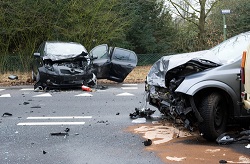The burden is on the plaintiff in Maryland in an uninsured or underinsured motorist claim to prove that the negligent car, truck, or motorcycle was uninsured or underinsured. The attorney’s inability to establish a lack of insurance is fatal to an uninsured motorist claim. Some jurisdictions, such as Texas, realize how difficult it is to prove that an automobile is not insured and shifts the burden of proof to the insurance company. See Tex. Ins. Code. Ann. art. 5.06–1(7). It is sometimes very hard, as they say, to prove a negative.
While not as accident victim-friendly as Texas, there is a bill pending in the Maryland General Assembly that would make the hard job of proving a negative a great deal easier. House Bill 1162 would enable plaintiffs bringing uninsured motorist claims to prove that the negligent driver was uninsured by one of two methods:
- Submission of a certified copy of the Maryland Motor Vehicle Administration (MVA) record (or similar record from another state) showing the absence of insurance coverage on the date of the auto accident, or;
- a document submitted by “the insurer that has been identified as the insurer of the motor vehicle” by the MVA or similar agency of another state; signed by the owner or driver of the car; and a police report from the accident investigator.
If the attorney could make such a showing under this bill, the burden of proof would shift to the insurance company to prove by a preponderance of the evidence that either the car or the driver had insurance coverage.
The bill passed unanimously passed the Maryland House of Delegates (134-0) and also passed the Maryland State Senate, but Governor Robert Ehrlich vetoed the bill. Supporters are trying to get the votes necessary to override the veto, a task they could not accomplish last year. Why Governor Ehrlich opposes the bill is anyone guess. The Maryland Automobile Insurance Fund opposes the bill at the Governor’s express or implied request, but the rest of the insurance industry understands the logic of the bill and has not opposed it. But Governor Ehrlich appears willing to stand on a virtual island on this issue.
2014 Update
The Maryland General Assembly passed Maryland House Bill 1162, sponsored by former Delegate Darryl Kelley (now a full-time practicing lawyer in Prince George’s County), a few days after I wrote this post over Governor Ehrich’s veto. This new bill was useful in assisting plaintiffs in Maryland dealing with uninsured motorist claims.
Could the General Assembly make the law even better? Yes. The Texas law cited above really makes the most sense. This is what they are doing in two other states that I think Maryland should model if they don’t adopt the Texas version.
- Arkansas: the jury can presume that both the motorist and the vehicle are not insured if the at-fault driver failed to provide within 90 days after the collision a certificate that shows the vehicle was insured
- Colorado: the allegedly at-fault driver is deemed uninsured if:
- the alleged tortfeasor cannot be located for service of process after reasonable attempts to serve the tortfeasor, service of process on the tortfeasor’s insurer is determined by a court to be insufficient or ineffective after reasonable attempts at service of process have failed, or
- the law enforcement agency investigating the accident cannot disclose the insurer covering the tortfeasor’s vehicle and the alleged tortfeasor’s coverage is not known by the person attempting to serve process
Why make it easier for plaintiffs’ lawyers to make their case? Ultimately, who is in the best position to prove whether a driver is uninsured. They have access to all kinds of information and they can get the cooperation of other insurance companies.
 Maryland Injury Law Center
Maryland Injury Law Center


